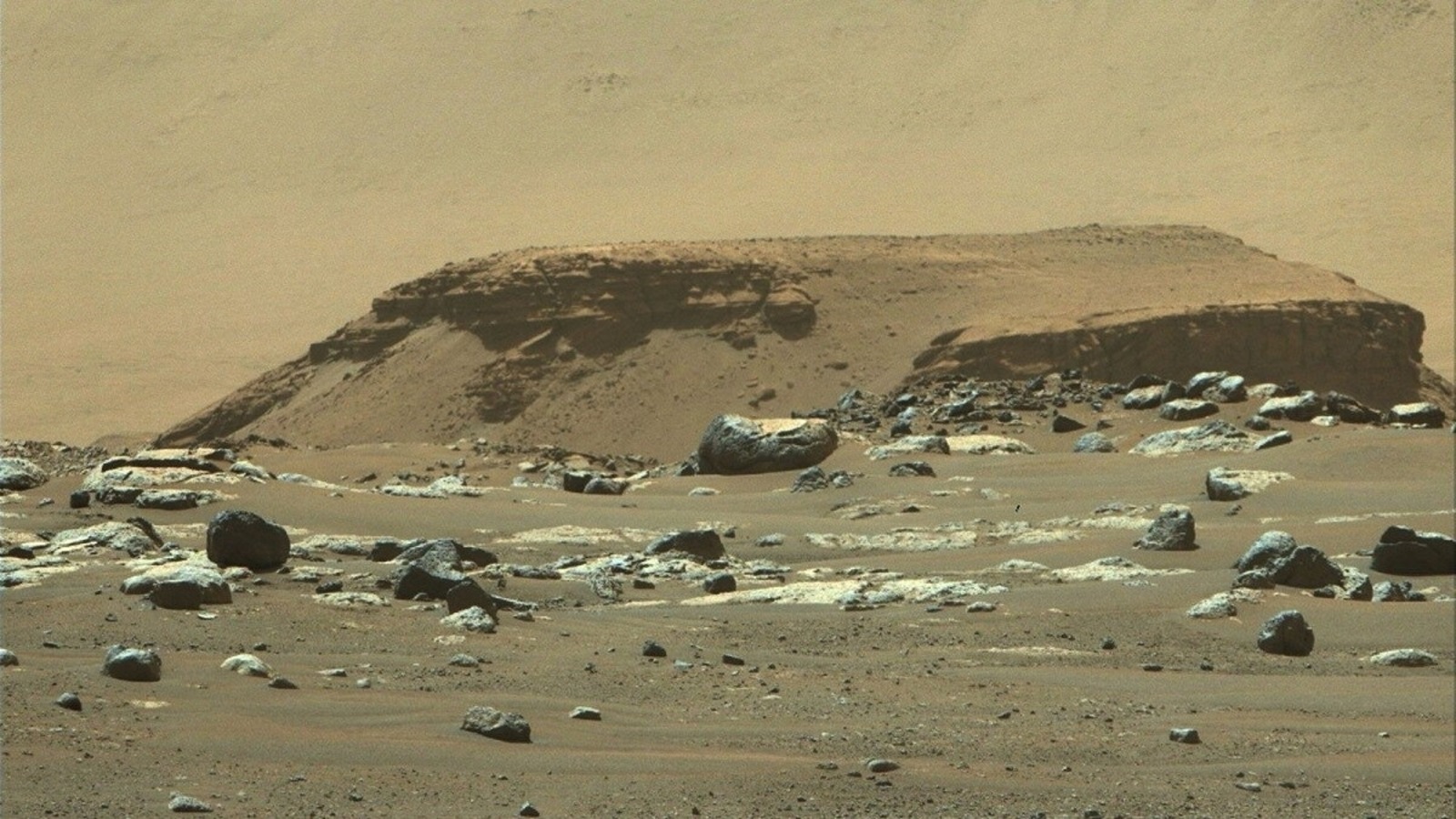
Mars is dry and desolate now but just 3.7 billion years, the Red Planet held water just like our Earth. And based on some recent findings, it may have been prone to flash floods, especially in the craters. The findings were published in a scientific journal that studied images from NASA’s Perseverance rover that’s currently settled in the Jezero crater.
Just before Earth halts communications with the newest Mars rover for a while, Perseverance sent across a few images of the Martian terrain. After studying the images, scientists came to conclusions that this region in Mars witnessed flash floods in the past. Almost 3.7 billion years ago, the Martian atmosphere was thick enough to preserve rivers that eventually gave rise to the fan-shaped delta.
NASA rover confirms Martian floods
The image of the tiny outcrop is supposed to be a river delta that fed into a lake. Towards the later stages, the global warming events led to a flash flood in that area before everything eventually dried up.
Geologists have said that this lake within the crater had enough water once to complete brim its eastern rim. Over the years, the size of the lake fluctuated largely and water levels fell as well as rose by several yards.
“If you look at these images, you’re basically staring at this epic desert landscape. It’s the most forlorn place you could ever visit. There’s not a drop of water anywhere, and yet, here we have evidence of a very different past. Something very profound happened in the planet’s history,” said Benjamin Weiss, professor of planetary sciences in MIT’s Department of Earth, Atmospheric and Planetary Sciences.
The formation that led to this conclusion is called Kodiake butte and spacecrafts have been long photographing it from the Martian orbit. However, the Perseverance rover’s Mastcam-Z and RMI images revealed the layers of the rock, which gave away hints to the history.
“Never before has such well-preserved stratigraphy been visible on Mars. This is the key observation that enables us to once and for all confirm the presence of a lake and river delta at Jezero. Getting a better understanding of the hydrology months in advance of our arrival at the delta is going to pay big dividends down the road,” Nicolas Mangold, a Perseverance scientist told JPL.
“A better understanding of Jezero’s delta is a key to understanding the change in hydrology for the area and it could potentially provide valuable insights into why the entire planet dried out," said Sanjeev Gupta, a Perseverance scientist from Imperial College, London, and a co-author of the paper.
https://news.google.com/__i/rss/rd/articles/CBMiZmh0dHBzOi8vdGVjaC5oaW5kdXN0YW50aW1lcy5jb20vdGVjaC9uZXdzL2Zsb29kcy1vbi1tYXJzLW5hc2Etcm92ZXItc3VibWl0cy1wcm9vZnMtNzE2MzM3NTY2OTM2NTkuaHRtbNIBamh0dHBzOi8vdGVjaC5oaW5kdXN0YW50aW1lcy5jb20vYW1wL3RlY2gvbmV3cy9mbG9vZHMtb24tbWFycy1uYXNhLXJvdmVyLXN1Ym1pdHMtcHJvb2ZzLTcxNjMzNzU2NjkzNjU5Lmh0bWw?oc=5
2021-10-09 05:18:13Z
52781922944809
Tidak ada komentar:
Posting Komentar